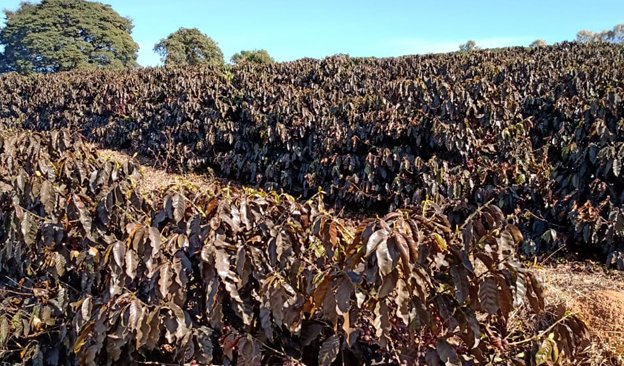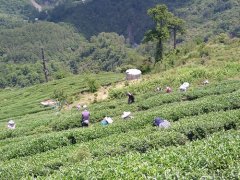In 2022, Brazil's Arabica coffee production will lose about 4% due to frost.
Journalist, coffee analyst and agricultural liaison co-ordinator Maja Wallengren reported in STiR Tea & Coffee, the world's leading tea and coffee industry magazine, that the frost-affected areas of Brazil's coffee-growing areas are so widespread that they account for 65 per cent of Brazil's total harvest in the average crop cycle.
STiR Tea & Coffee received exclusive sources from senior Brazilian government officials that according to preliminary estimates, the flowering season of coffee will begin between the end of September and the beginning of October, while Brazilian coffee production will be reduced by 10 million to 12 million bags (60 kg each) in 2022.
This figure is based on the percentage of areas severely affected, and coffee production in the affected areas will not begin to recover until 2024 and 2025.
But this does not include much larger coffee farms, which will have to be replanted because of uneven waves caused by frost.

Dalcio Oliveira Guidett, a coffee grower from the Serra Negra area of Sao Paulo, said in an interview that 30 per cent of the total acreage of my plantation was grown coffee, and the impact was much lower than that of many growers I knew, but I had to repair at least 50 per cent of the area because of the way the frost unevenly damaged coffee plants and soil.
This is what happens to most coffee growers, although a small number of areas can be repaired by less invasive pruning because of less frost damage, but in most areas stumps need to be cut down or even replanted, and in both cases it takes three to four years for coffee plants to return to capacity. If it is to be replanted, the construction will need to be delayed until the end of 2022 due to the lack of planting materials.
Maja Wallengren also wrote in the report that more than 800km of the road from Minas South to Altamogiana to Syracuse was dominated by large areas of coffee plants "charred" by frost.

Virginia Aguiar (Virginia Aguiar), from the Fazenda Semente estate in Patrosinio Hilado, choked that the coffee plants had been destroyed by frost and would be lucky to recover 5 to 10 per cent by pruning.
The farm in Patrosinio Hilado is one of the areas hardest affected by the frost, with preliminary data showing that the loss is as high as 60%, while the total loss of Syrador is estimated to be between 25 and 30%. However, because the average yield of Syrador is 55-60 bags per hectare in the big harvest cycle, which is the highest in the world, the negative and long-term impact on Brazilian yield is more significant.

Despite the heavy losses in the Hirado region, the Tropical Research Service (TRS,Tropical Research Services) said that the frost disaster in Brazil in recent weeks was not as severe as expected, resulting in a loss of about 4 per cent of production in the next season.
TRS's estimate of the loss is also by far the lowest, while trader Comexim expects production in the southern Brazilian state of Minas Gerais to fall by nearly 20 per cent.
TRS also said that compared with the frost, the drought will continue to cause Brazil to lose 6.3 million bags of Arabica beans next year. If the current high coffee prices continue, coffee production in other countries will also increase, offsetting the losses caused by frost in Brazil.
For more information about coffee beans, please follow the coffee workshop (Wechat official account cafe_style)
For professional coffee knowledge exchange, please add Wechat account kaixinguoguo0925.
Important Notice :
前街咖啡 FrontStreet Coffee has moved to new addredd:
FrontStreet Coffee Address: 315,Donghua East Road,GuangZhou
Tel:020 38364473
- Prev

What are the more famous brands of Taiwan tea? what are the top ten famous tea brands in China and Taiwan?
The origin of tea species: tea (Camellias 1nens1s L. Kuntze) is the most important cash crop in the family Theaceae and Camellia. Among the tea species, there are many subspecies, and the five most important species are Chinese leafy species (C Sinensis Var. Sinensis) and Asam species, or C Sinensis Var. Assamic
- Next

Guochao design retro elements play old brand soda packaging Huayang soda how is sand show?
It's the sound of soda! It's the sound of summer! In the summer when I was a child, the refrigerator was full of watermelons and chilled sodas. After growing up, there are more fashionable new products next to some familiar products, and many local old beverage brands have made a comeback in the market environment of the national trend. Why did this happen? Codeword worker 6 summed up 4 for you here.
Related
- Beginners will see the "Coffee pull flower" guide!
- What is the difference between ice blog purified milk and ordinary milk coffee?
- Why is the Philippines the largest producer of crops in Liberia?
- For coffee extraction, should the fine powder be retained?
- How does extracted espresso fill pressed powder? How much strength does it take to press the powder?
- How to make jasmine cold extract coffee? Is the jasmine + latte good?
- Will this little toy really make the coffee taste better? How does Lily Drip affect coffee extraction?
- Will the action of slapping the filter cup also affect coffee extraction?
- What's the difference between powder-to-water ratio and powder-to-liquid ratio?
- What is the Ethiopian local species? What does it have to do with Heirloom native species?

